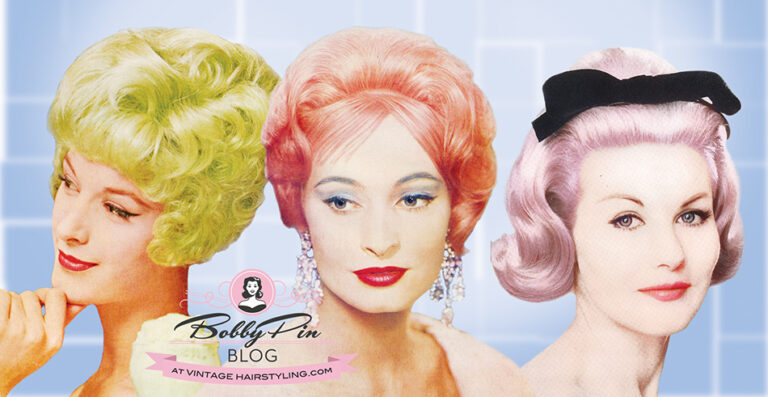
Many people are familiar with the common aesthetic of color in the 1950s, especially pastel colors. Among the powder blue kitchen cabinets and wall to wall green carpet though, not many people know there was a pastel hair color trend as well.
- When did the 1950s pastel hair trend start?
- Watch a full dive into 1950s and 1960s pastel hair
- What did these Pastels look like?
- Color Your Own Hair Pastel
When did the 1950s Pastel Hair Trend Start?
Colorful hair like pastels has a long history. Various moments in the last 300 years have seen adventurous people decorating their hair with unnatural hair colors through toning, dying, and wigs. In the 18th century, women (and men alike) used pastel tinted powder on their wigs.
The roots of the 1950s pastel hair trend can be traced back to approximately 1954, with reports surfacing of women sporting pink-tinted hair.


It is in 1955 that these unusual hair colors really start to take off. Pastel hair pops up at cosmetology conventions, fashion shows, and on the streets of cities across America.
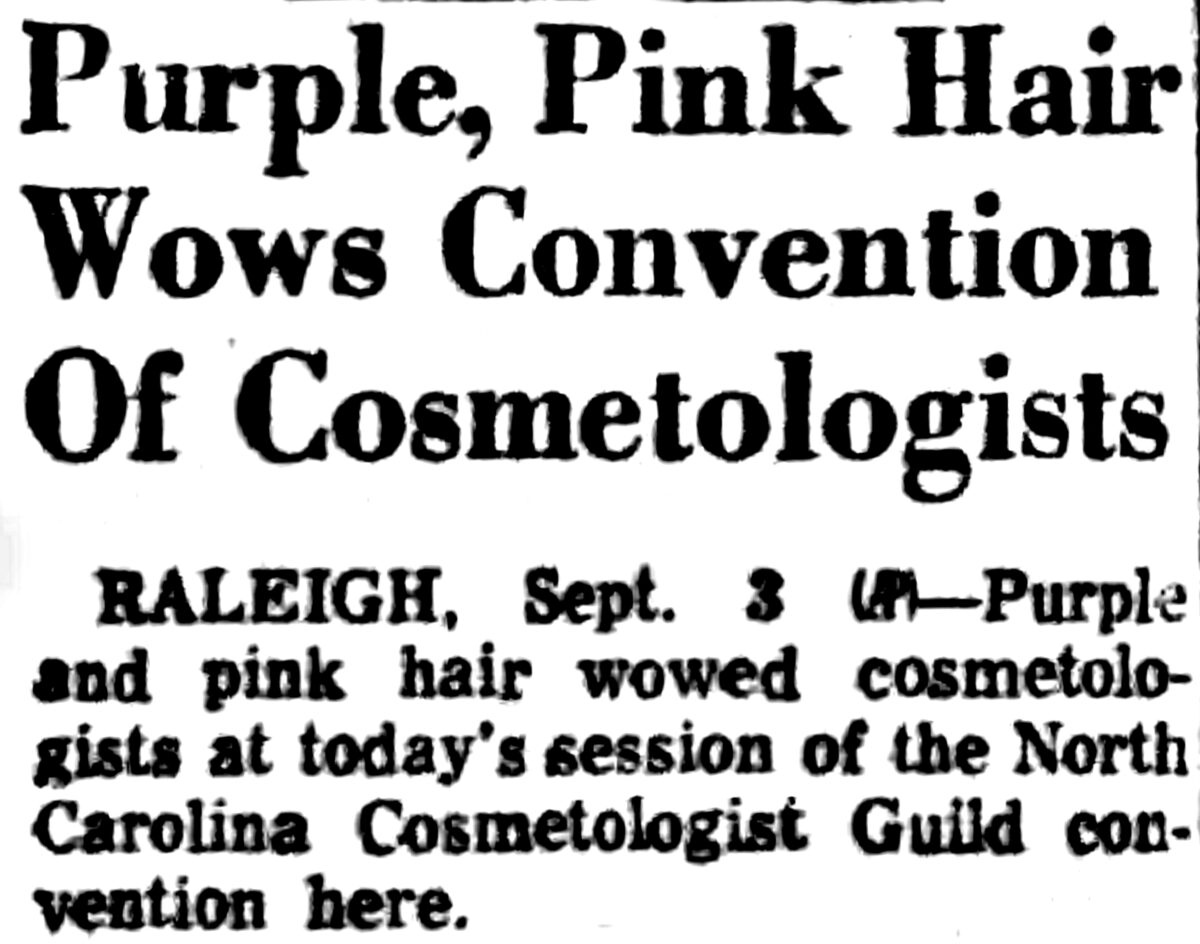
These pastel hues included pink, lavender, mint, pale blue, and peach.



An article from a 1955 Montgomery, Alabama newspaper describes the scene well.
“Downtown coffee drinkers thought their drinks had been spiked this morning when they looked up and saw a girl with pink hair. Actually, they were seeing a hairstylist displaying the newest thing in hair dye.
The young lady causing all of the commotion was Yvonne Moss, a native of Miami and a representative of L’Oreal of Paris.
Miss Moss assured all questioners that the pink, blue, lavender, and other unusual shades were very fashionable in Europe.
Eyes bulged out all up and down the street as shoppers stared as she passed.”

It wasn’t just hairstylists wearing this color trend. I share the stories of everyday women who colored their hair pastel in my YouTube video here.
This joyful hair color’s popularity continued into the early 1960s. As trends in color moved away from pastels and into the more vibrant hues of the mid-1960s, so did the trend of pastel hair color move out too.
Watch a Full Dive into 1950s and 1960s Pastel Hair
What the Pastel Hair Colors Looked Like…
So why do so few people know about this trend and what it looked like? The quickest answer is black and white printing.
I have hair magazines from the late 1950s and early 1960s with images of women described as having these pastel hair colors. But the interior pages are mostly printed in black and white. Color was very expensive to print at the time. So often only the covers would be full color and there might be some, what we call spot color advertisements, inside.
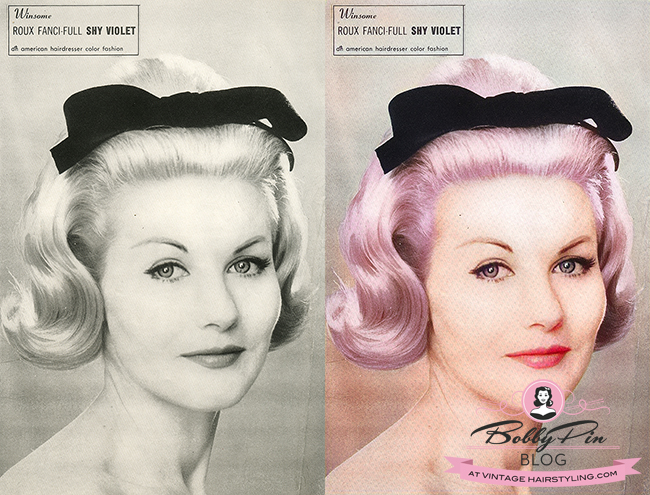
These pastel hair colors were often achieved through toners and rinses and many of hair color brands in the 1950s had these toners and toning rinses. The lighter shades for blonde and grey often included pale blues and violets to counteract yellow. If you left these toners on too long, you could achieve blue or lavender hair.
You might also like: What Decade is Your Favorite Vintage Hairstyle… Really?
With the popularity of color at this time, women and their hairstylists used this overtoning process to get pastel haircolors on purpose. It was in the mid and late 1950s, that some color brands started offering more color tone options than others. The brand that offered the most color options here in the US was Roux.
Roux’s line of Fanci-Tone permanent colors and Fanci-full Rinses had the largest color range. Thanks to the swatch books from some of these brands, we can see what these pastel hair colors looked like.
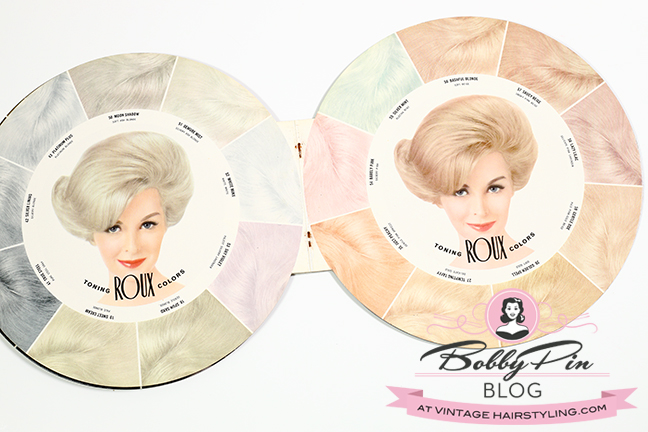
The names for these toning pastels included Shy Violet, Barely Pink, Silver Mint, Just Peachy, or Lazy Lilac. In the tones for grey hair and blonde toning to eliminate yellow, Roux carried True Steel, Silver Lining, Platinum Plus, Moon Shadow, Demure Mist, and White Minx.
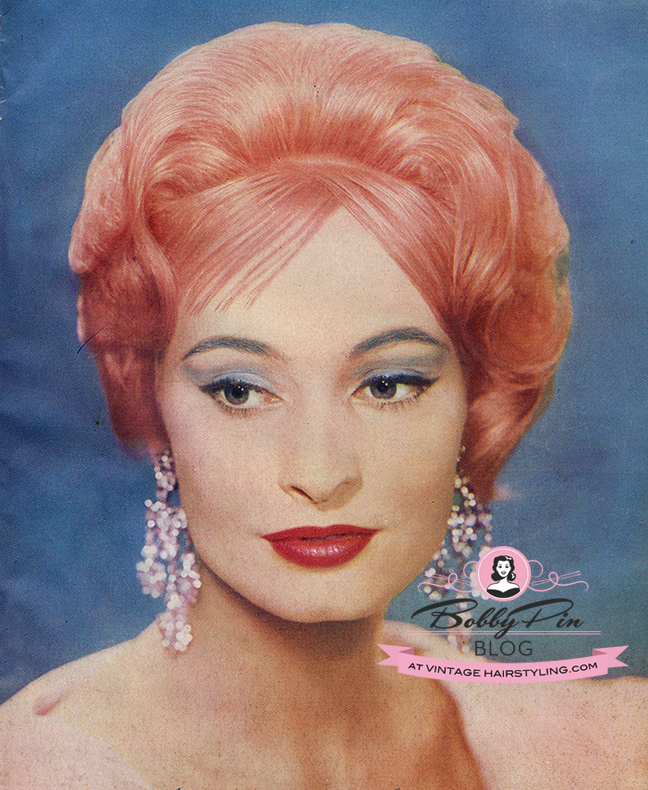
At some point around 1960, Roux expanded their color line with “Party Colors”. They carried this color line into the 1970s.
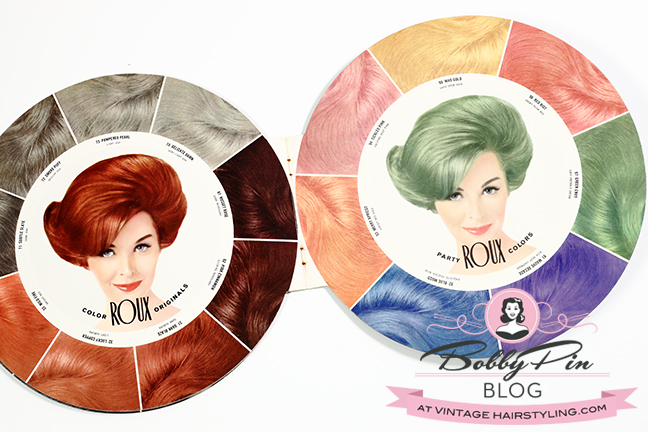
These more vibrant color options came in Tickled Pink, Mad Gold, Red Riot, Green Envy, Mauve Decade, Blue Mood, and Merry Apricot.
Lapinal Life-Lite Hair Colour (which later became Redken brand) also leaned heavily into the pink hair color fad. In 1959, this cute ad with pink poodle advertised “Fashionable colors, dramatic colors, conservative colors – all glistening with highlights – sparkling with youthful, natural sheen that is only Lapinal!” Their pink options are listed as white pink, blonde pink, tickled pink, and tickled pinker.
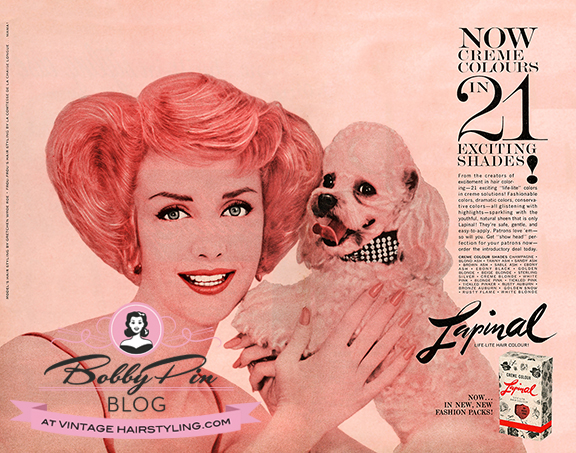
Other color lines, including Rayette Color Tress, Clairol, and L’Oreal, carried pastel hair color formulas.
Achieving Vintage Pastel Hair Today
Those pastel color brands I mentioned are no longer available in stores. But that doesn’t mean you can’t have fun with vintage pastel hair colors now with some easy-to-apply hair color products… no professional salon services required.
I understand that the salon experience is not in everyone’s budget. You will get the most predictable results there… BUT… for the at-home color experience, here are some great options in order of least permanent to most permanent. (Note: Pastel hair color shows up best on light hair color base.)
- Superficial Color Hairsprays and Chalks
- Build Temporary Color with a Color Shampoo/Conditioner
- Semi-Permanent Color for Longer Lasting Results
- Permanent Color Options (Box Dyes)
Warning: Be sure to always read the labels and follow the directions correctly, including any recommended allergy testing.
Color Hairsprays and Chalks
Sprays and chalks are the most accessible for people who really only want the color for one event and want it to wash out right away. If your job or your school has strict hair color rules, you don’t want to take your chances.
Color hairsprays are exactly that. Just spray on in sections and let dry. They’ll wash out the next time you shampoo. L’Oreal Paris Colorista has some really nice pastel color sprays, including coral peach, mint, lavender, and pastel pink.
Chalks are just what they sound like. They are packed color powders that you literally wipe over the hair strand to apply the color. These chalks from Amazon come in a ton of different colors. You just wet them and comb through.
You might also like: Pink hair for boys in the 1960s?
Temporary Option: Building Color for Intensity on lighter hair
My favorite pastel coloring method is with color depositing shampoos and conditioners. These products are temporary and fade away overtime when you use a normal shampoo in subsequent washes. You can also build intensity with continued use of the color depositing products.
One of my favorite products is Keracolor Clenditioner Semi Permanent Color Depositing Conditioner. It was part of my hair color routine for my YouTube video about Pastel Hair in the mid-20th century. I used a professional toner, but then used the rose gold color to add a pink hue to my highlights. Read further down on how to use this product and have some control over it.
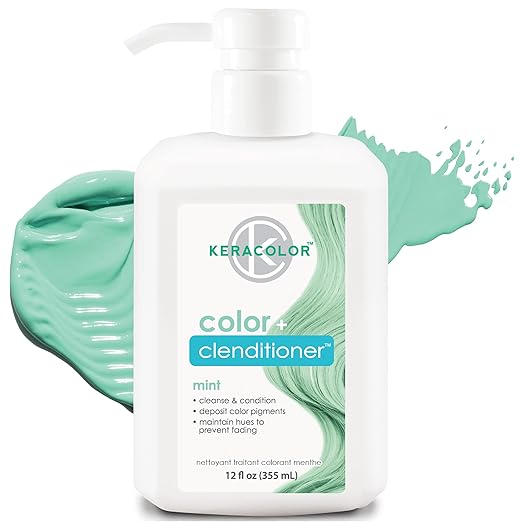
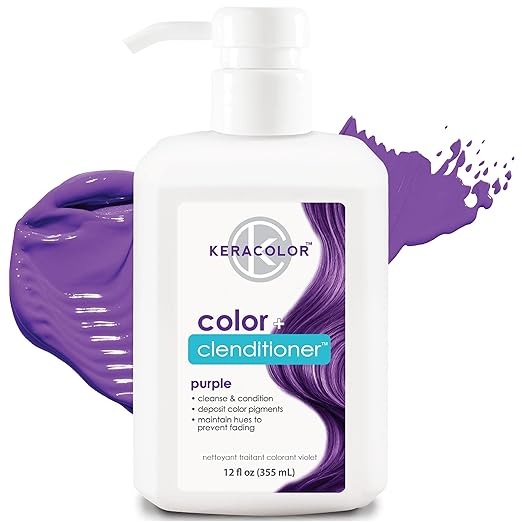
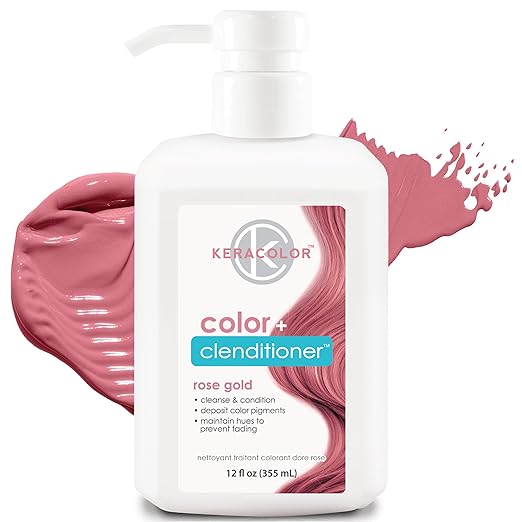
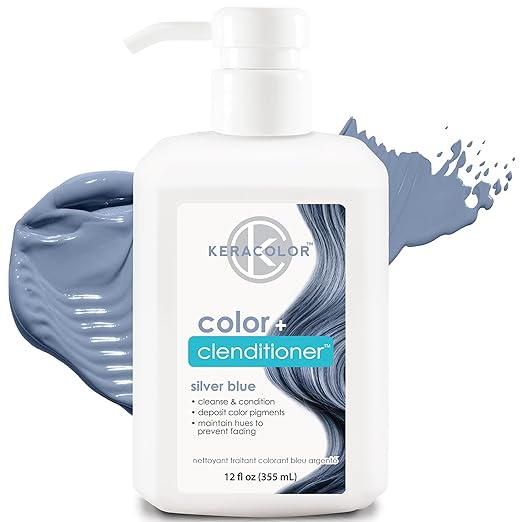
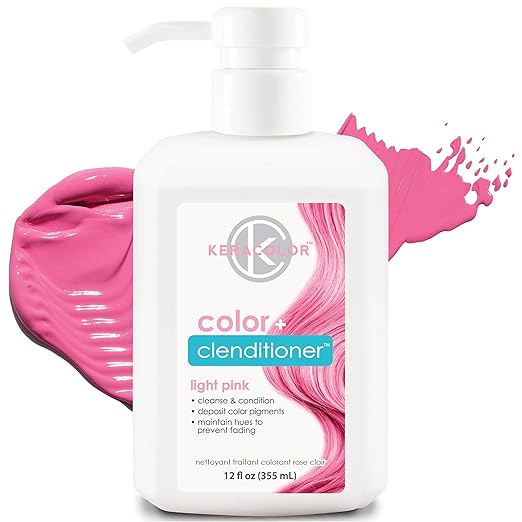
You might look at these colors from Keracolor Clenditioner Semi Permanent Color Depositing Conditioner and think they are too vivid. But the colors shown are what the company anticipates the color would look like if you used it for several wash cycles. The Amazon listing has a ton of reviews and pics from women who tried it, so go check it out to get others’ input.
Here are some of my tips for pastel-ing your own hair at home with Keracolor:
- Prep your hair as directed by the bottle. The color is designed to be used on wet hair.
- Do a swatch test. Apply a small amount to a small section of your hair to test how your hair is going to react to the color.
- Time how long you leave this test on your hair before your rinsed it out. This is important. The longer you leave it on, the more color could be deposited. So, if you like the results of the swatch, you want to know how to recreate it.
- Saturate hair thoroughly with product. When applying, you will get the best, most even results if you work in small 2×2 inch sections for fine hair or 1×1 inch sections on thick hair. Make sure you get your roots covered. You should feel the product on your scalp. And work the product with your fingers into the hair shaft from scalp to ends. Shift the hair between your fingers, so the product really gets all over.
- Build over time. The color is a cleanse and condition combo product. The more often you use it when you are washing, the more color will build on the hair. Depending on your natural hair color base, you may want more intense color.
Semi-Permanent Pastels and Bright Colors Diluted
Semi-Permanent colors are applied like regular permanent hair colors without the developer. There are some colors you can get in pastel. And most of these companies also sell “diluters”. These are colorless versions of the product to dilute the color intensity, like when you add soda water to a drink that is too strong. 🙂
- Apply thoroughly from scalp to ends
- Let sit for recommended time in the directions
- Shampoo out and condition hair
- Dry hair
Depending on the porosity of your hair, the longevity of the hair color will vary. If you shampoo your hair everyday, it will fade faster. But these do overall last for a while.
Home use semi-permanent brand options to get pastel hair includes the tried and true Manic Panic. With pastel color choices to die for like pretty flamingo, amethyst ashes, and the lovely Dreamsicle.
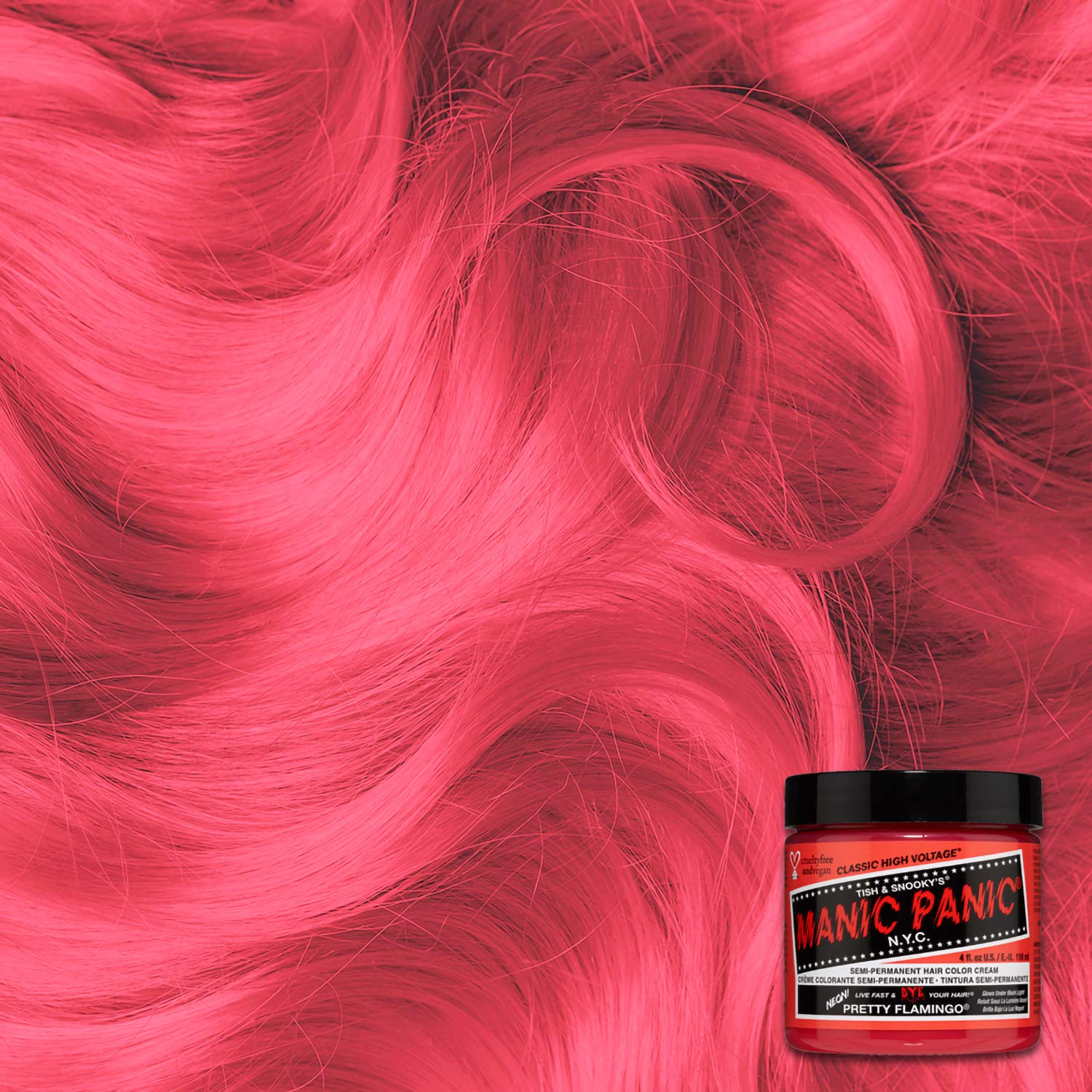
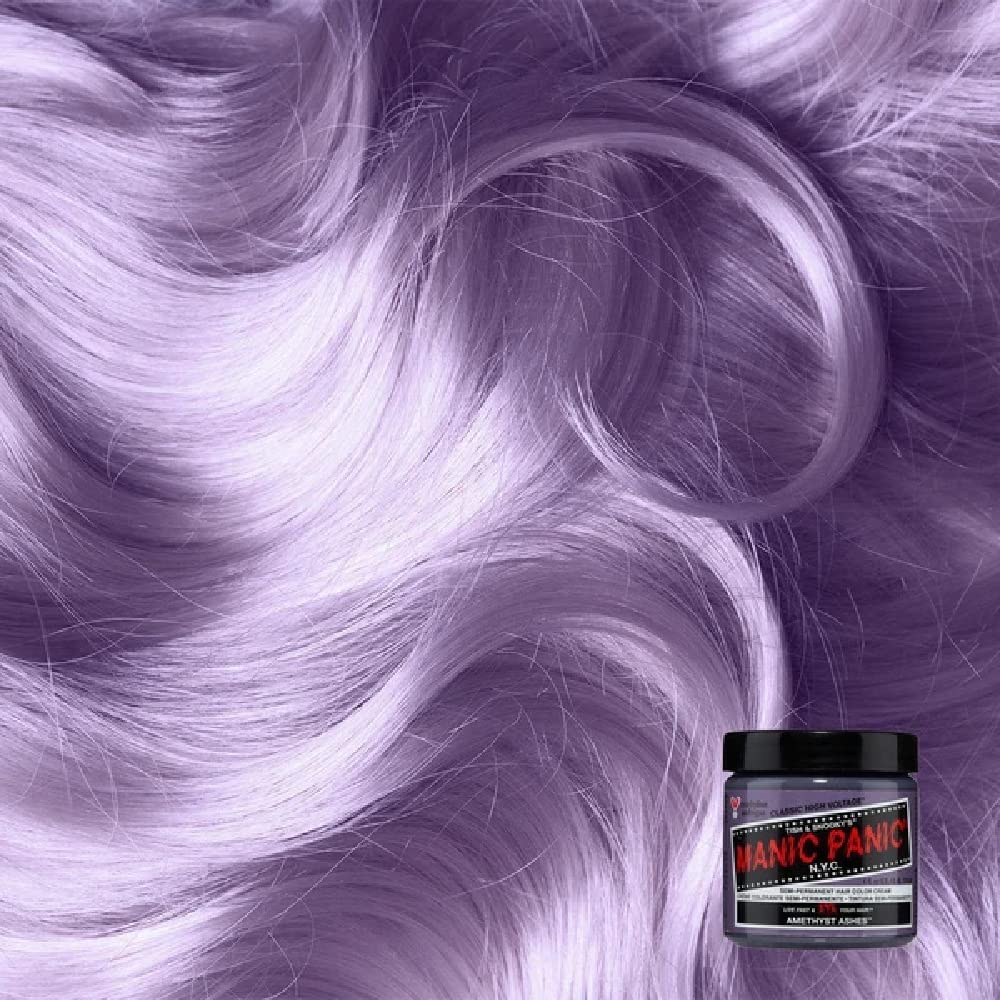
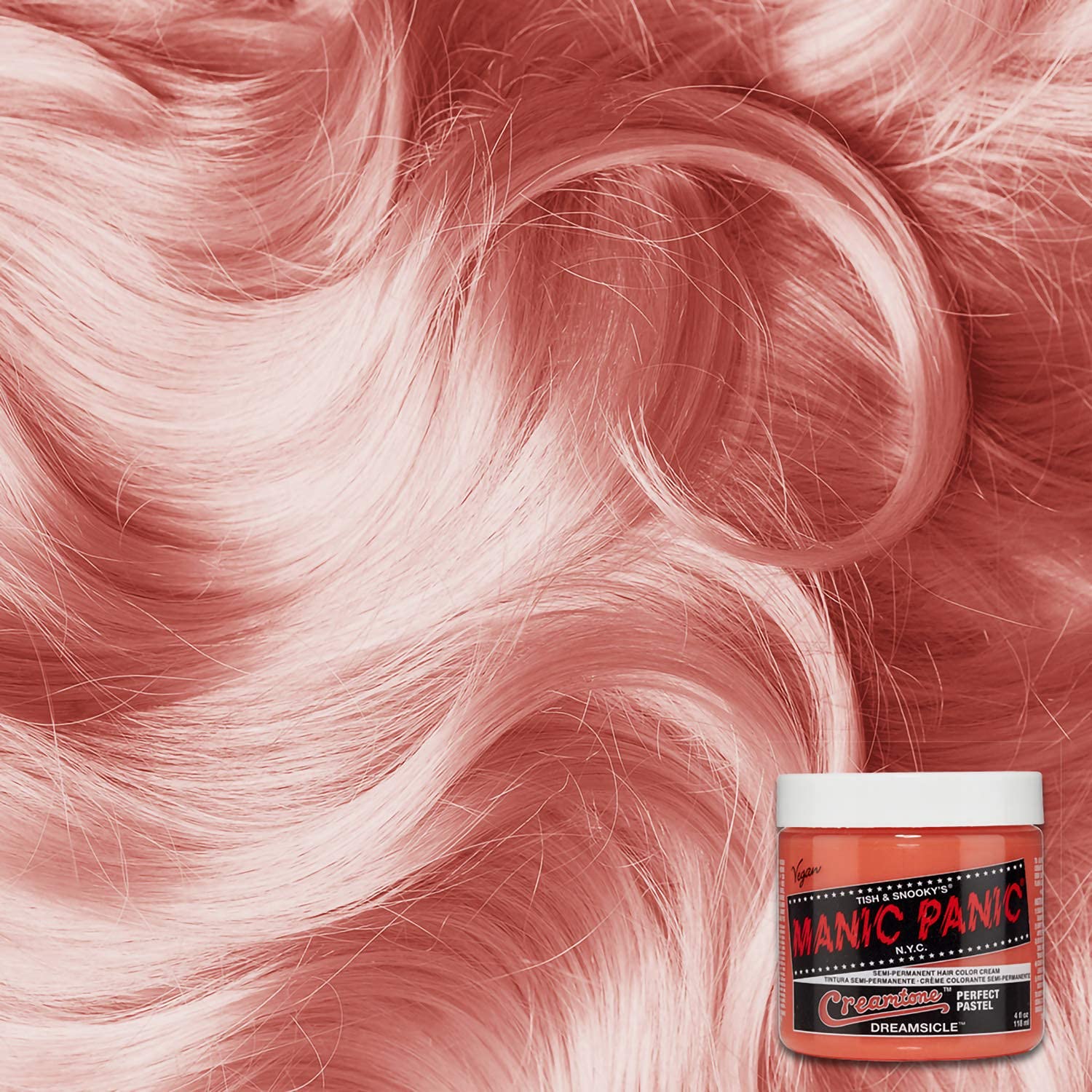
I’ve also had great experiences with Arctic Fox, using it on my daughter’s hair. They don’t have a ton of pastel options, so I highly recommend using their Arctic Mist Diluter with one of their more vibrant colors. This is where a test swatch will also come in handy to make sure you are getting the color results you want.
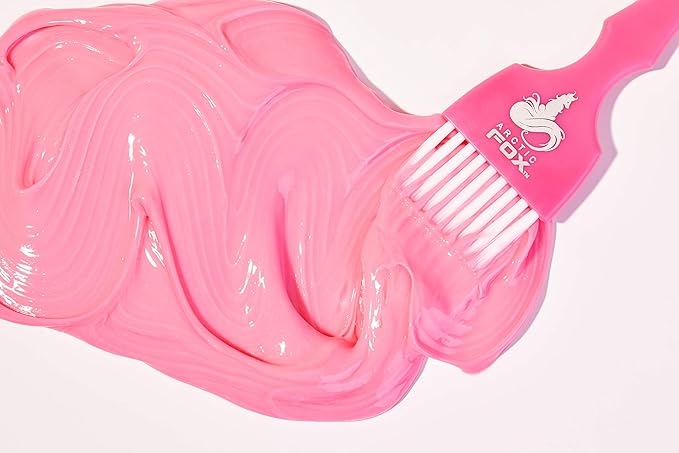
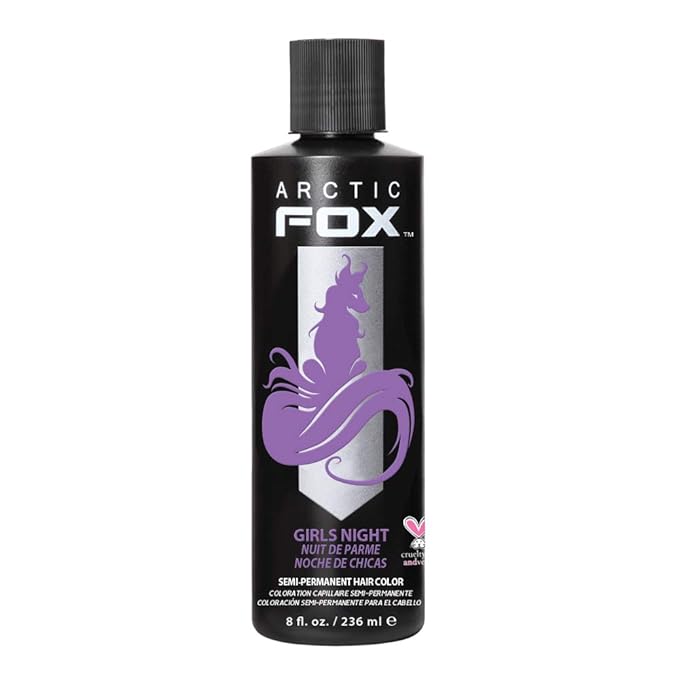
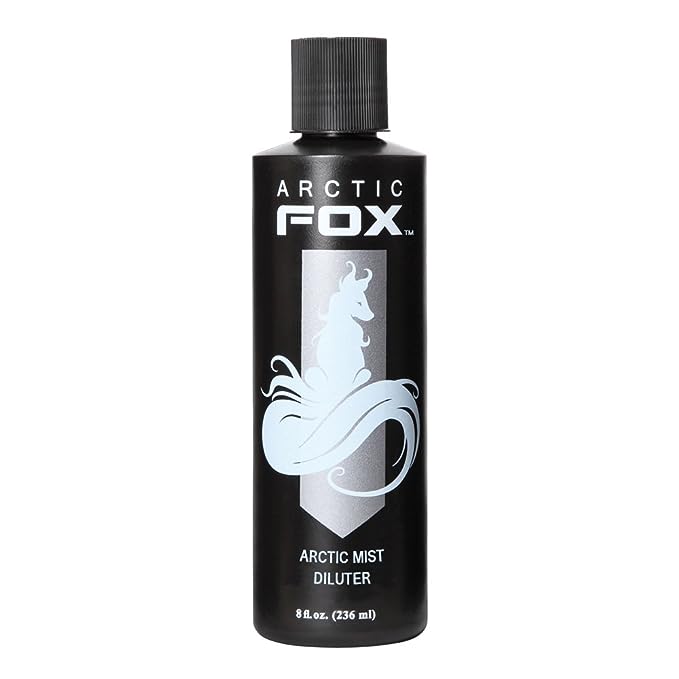
Permanent Color Options (Box Dyes)
As a professional hairstylist, yes, there is a little disdain in my voice when I say the words “box dyes”. But the reality is that they are sometimes great. I used Feria to get my red hair in college.
You have no doubt heard of box dye horror stories as well, so I will just leave this here and just say, “May the odds be ever in your favor.”
These products are called “permanent”, but only because they use a developer in the chemical coloring process. Don’t be fooled into thinking these colors will last a long time. The molecular structure of bright colors is too “big” to stay put in the hair follicle.
Reputable box colors that have pastel options include Revlon, L’Oreal Paris Feria, and Clairol.
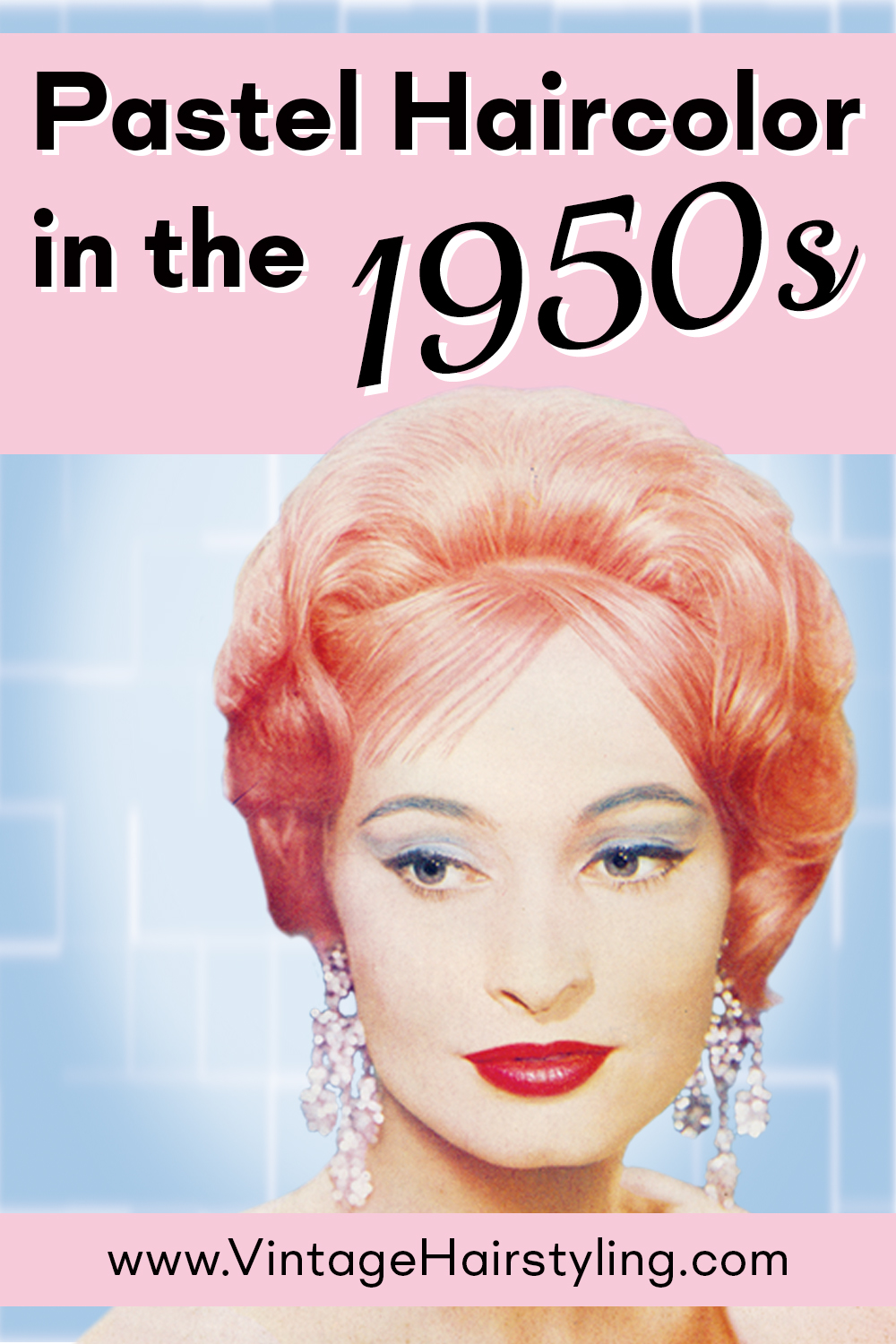
Related posts
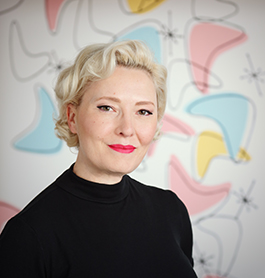
Welcome to the Bobby Pin Blog! I am Lauren Rennells and as a hairstylist, makeup artist, writer, and generally artistic over-achiever, the Bobby Pin Blog is my outlet for thoughts and research about vintage hair and makeup trends and how to recreate them today. Thank you for stopping by!
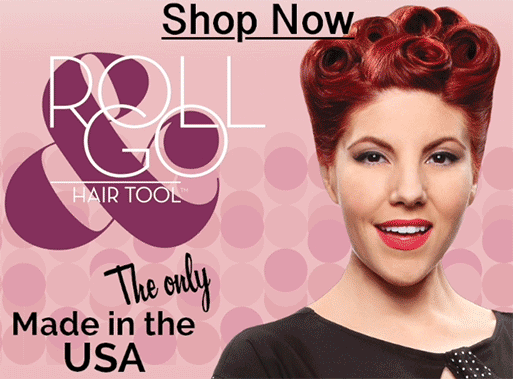
As an Etsy and Amazon associate I earn from qualifying purchases. As an independent blogger, I link these items because of my own opinions and not because of the commission I may receive.
Archives
Categories
Recent Posts
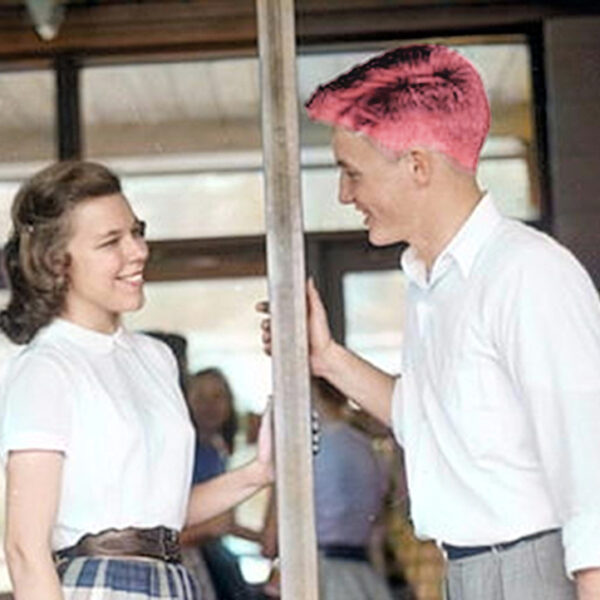
Boys with Pink Hair in the 1960s?
April 26, 2024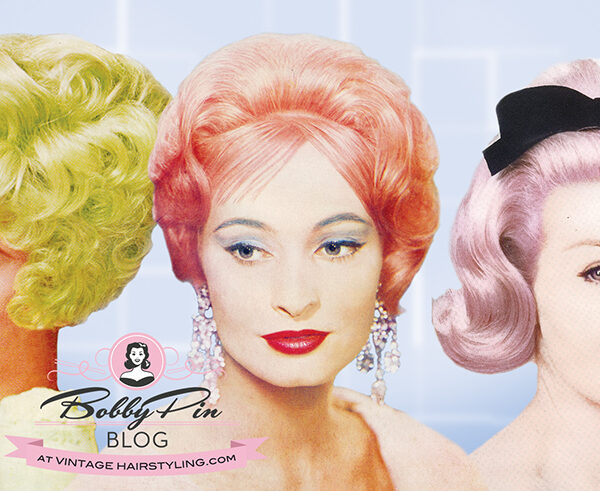
Pastel Hair Craze of the 1950s and How to Do it Today
April 17, 2024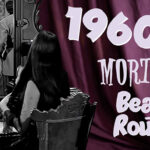
Beauty Routine of Midcentury Morticia Addams
October 18, 2023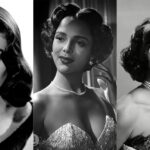
10 Iconic 1950s Hairstyles for Every Hair Length
April 4, 2023
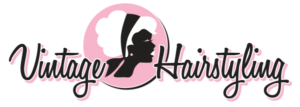
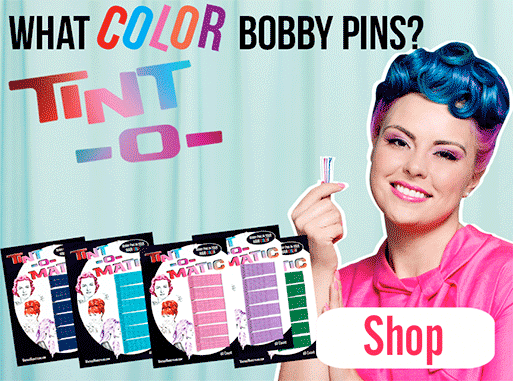
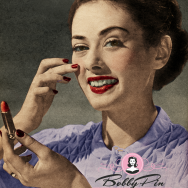
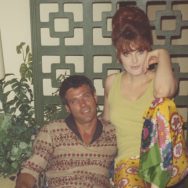
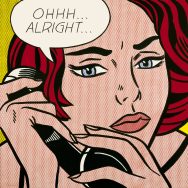
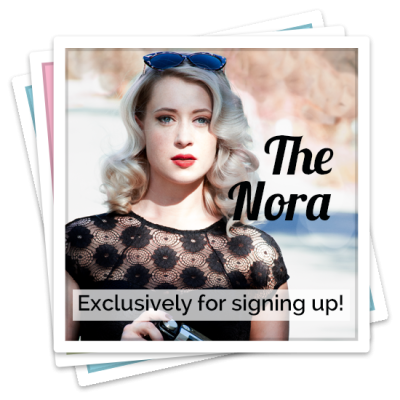
1 Comment
Wow, I always thought that crazy hair colors were a modern phenomenon! I wonder how many were brave enough to dye their hair an unconventional color in the 50s. Thank you for another great post, much love from Finland 🙂